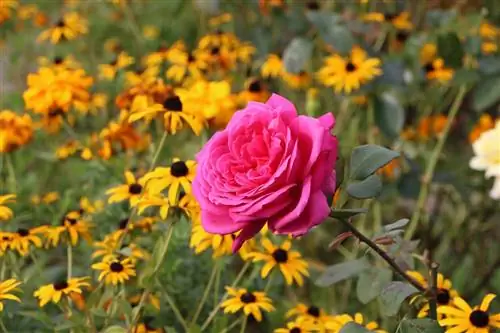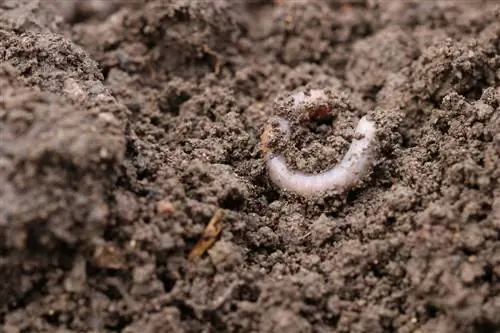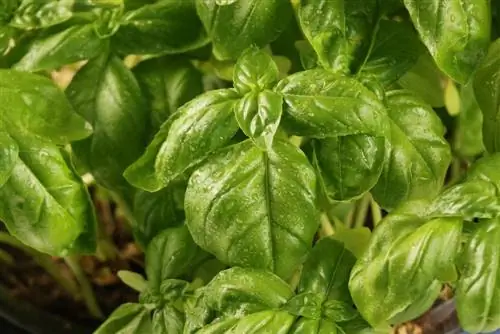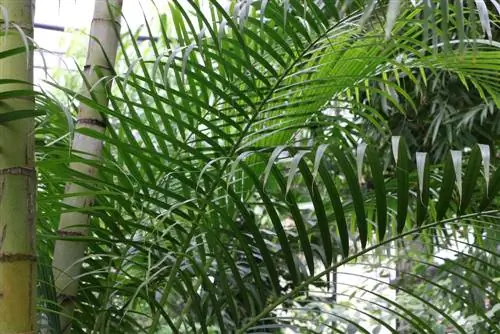- Author admin [email protected].
- Public 2023-12-17 03:39.
- Last modified 2025-06-01 06:48.
A beautiful bonsai that is regularly repotted and trimmed is the pride of every bonsai lover. It takes a little practice and sensitivity as well as experience so that a bonsai can shine in its full splendor. Particular attention must be paid to the earth. Because the small-sized structures are very demanding when it comes to the earth and its composition.
No conventional potting soil
Because there is no bonsai that grows and thrives in conventional potting soil. Rather, the small trees or plants with the Mediterranean flair require very special soil, the composition of which provides exactly the nutrients and habitat that is so important for bonsai.
Did you know
that in our latitudes people like to grow native plants and trees as bonsai? The only important thing is that they become woody quickly and can form small leaves or needles.
Preparations
A good bonsai soil consists of several components that must first be put together during preparation. In addition to the different earth substances, some tools are also required. This includes distilled water and a pH test stick.
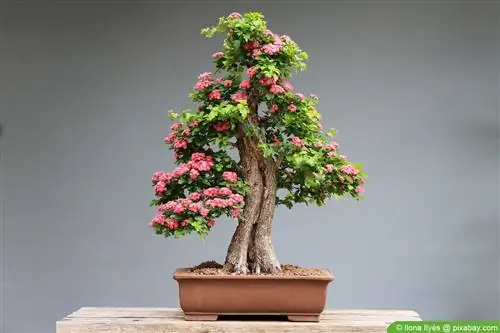
Loam, peat, sand and carbonated lime are also required for the bonsai soil. All products can be purchased individually. To prevent mold, it is advisable to purchase only the quantities needed to make the soil. You should also make sure that everything is fresh and has not been rotting in plastic bags for many months. The specialist retailer is therefore definitely the best place to purchase the individual products.
Tip:
Please only mix the soil that is actually needed at the moment. Any soil that needs to be stored is an ideal breeding ground for mold, which in the worst case scenario can cause the bonsai to die.
Making Earth
Before you start mixing the soil, you have to consider where the bonsai should be and what type it is. Because an indoor bonsai and also a foliage bonsai require a different soil composition than a bonsai that can grow in nature or that has needles.
If it is a deciduous variety that is intended to grow indoors, then more peat must be used than for a needle bonsai that grows outdoors. This one wants more sand in the soil in order to be able to absorb water and nutrients better.
Mixing ratio of foliage bonsai as a room variant:
- 4 parts peat
- 4 parts clay
- 2 parts sand
Mixing ratio for needle bonsai as a garden variant:
- 4 parts sand
- 4 parts clay
- 2 parts peat
Tip:
The sand must not be conventional play sand or similar. It must be from a specialist retailer and advertised as so-called “sharp” sand. If this is not available, fine grit or lava granules can also be used. It is important that the sand loosens the soil sufficiently and creates good conditions for the bonsai.
The pH value
As with any good soil, the pH value plays a very important role in bonsai soil. This can be checked using the pH test strip already mentioned. If the value is between 6.0 and 6.5, it is ideal. If this is not the case, a little carbonated lime can be added if the value is too low. However, if it is too high, it must be weakened with peat. Sometimes it takes a little patience until the right composition is found. It may therefore be necessary to use several test strips.
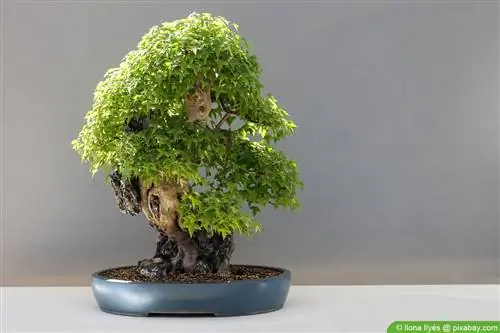
Tip:
To check the pH value, one part of soil must be mixed with two parts of distilled water. The test strip is placed in the resulting slurry. The pH value can then be read using the color scale.
Other blends
Since bonsai and its management is a big topic, there are many hobby gardeners and breeders who have developed their very own mixtures and of course consider them to be the best mixture.
Please note:
Every bonsai is different. And every gardener or breeder has different requirements.
Which of course doesn't mean that one or two tips shouldn't be tried out and implemented. It is always important to work with fresh ingredients and to pay attention to the location of the bonsai.
A good mix would be:
- 3 parts grit
- 2 parts Akadama
- 1 part potting soil
An equally good mixture would be:
- 1 part coconut fiber
- 1 part aquarium gravel
- 1 part potting soil
- 1 part Seramis
or else:
- 1 part coconut hum
- 1 part potting soil
- 1 part sand
Generally applies
Trying is more important than studying. If the pH value is right, a lot has already been achieved. And maybe there is a dear friend or garden neighbor who has further tips for the right soil, the right location and the ideal bonsai. Because what grows successfully in your neighbor's garden should also be able to grow and thrive a few meters away.
Tip:
All components should always be sieved to remove impurities. If waterlogging occurs, it is always worth using additional drainage to prevent this.
Frequently asked questions
Which types of trees are best suited as bonsai?
In Japan - the motherland of bonsai - mainly pines, maples, junipers and elms are grown as bonsai. In our latitudes, native trees are usually used. They cope best with our climate and can thrive accordingly.
Can the earth also be bought?
In general, any soil can be bought. But the fact is that nobody knows how long this earth has been around. The chance that it contains mold or other pests is therefore very high. If you mix the soil yourself, not only does the composition fit, but you also get fresh soil that offers the best conditions for bonsai.
How much patience do you need to have?
It is an art to keep an actually large tree as small as a bonsai. Everyone should be aware that this doesn't always work straight away. But with a little practice and patience, anything can succeed. Just have courage - then it will work.


